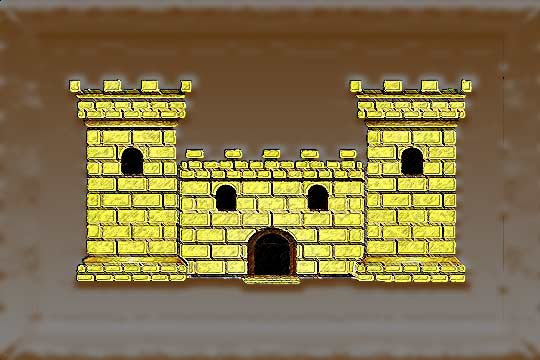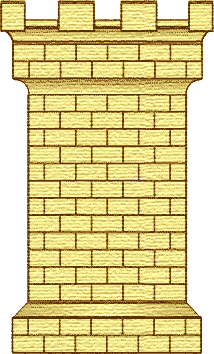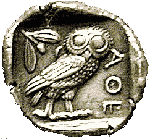Santameri, Dytiki Achaea, Achaea,West Greece
Castle of Santameri
| Location: |
| On the rocky mountain above Santameri village, Achaea, Peloponnese |
| Region > Prefecture: |  |
| West Greece Achaea | |
| Municipality > Town: | |
| City of Dytiki Achaea • Santameri | |
| Altitude: | |
|
Elevation ≈ 750 m (Relative Height≈340 m) |
| Time of Construction | Origin | |
| 1311 | FRANKISH |
|
| Castle Type | Condition | |
| Castle Ruins |
In Ruins
|
A castle built on the mountain with the same name: Santameri. The ancient name of the mountain was Skollis. It used to be one of the most powerful castles in Peloponnese controlling a large part of the fertile plain of Ilia.
Despite its past glory, only some barely visble ruins remain from the castle today.
History
The castle was built in 1311 by the Frank lord of Thiva Nicolas III Saint-Omer. Over the next decades, a large town with 500 families was developed there.
The Byzantines tried to capture the castle several times without success. Finally it was given as dowry to the Despot of Mystras Constantine Paleologos (later Emperor of Byzantium) when he married Theodora Tocco in 1428.
The castle was surrendered to the Turks in 1460. The Ottoman commander Zaganos Pasha violated the treaty with the defenders and many inhabitants were killed or sold to slavery.
The castle must have been abandoned around the 18th century when the modern village was founded at the foot of the mountain.
Structure, Fortification & Buildings
The mountain is a narrow mass of low but steep and rocky peaks aligned to the axis North-South, more than 8km long.
The castle is at the northern part of this mountainous terrain, between the modern villages Santameri, at the western foot, and Charavgi (old name Chantzouri) at the east.
At the southernmost tip of the mountain, 5km from the Santameri castle, existed another fortified medieval settlement named Portes or “Castle of Portes”.
The castle of Santameri occupies an area 800✖200m and consists of a citadel, an upper town and alower town.

The citadel is at the southern edge, around 200m from the last houses of the settlement. It sits on a limestone peak and covers a small area of 30✖40m. Α solid wall of stone and mortar surrounds it. Most of the masonry has collapsed below and can only be seen from the distance. The only structure within the citadel is a square cistern 9.00✖9.50 m. Only the lower foundations of this structure survive at a depth of over 2.20 m.
Antoine Bon mistakenly identified the citadel as the castle of Nicholas Saint Omer and expressed doubts if this really was the place of the famous Santameri.
The locals have identified Saint Homer's palace with the toponym palatakί (little palace) near a building halfway between the citadel and the settlement (100m in either direction). The building is square (9✖9m) and divided into two equal bays. It survives only in its foundations. The walls are approximately 0.90 m thick and may have supported a towering structure above. Its size and isolation suggest it is not a palace, but rather an observation tower.
The urban core of the settlement contains 140 houses along 330m. Α wall, evidence of which survives at the northeast end, may have surrounded this upper town. Unlike the defensive walls of the citadel, this circuit seems to have simply terraced the site and marked a boundary. The houses show a surprisingly degree of regularity not only in their modular size (5✖5, 10, 15m) but also by their orthogonal alignment. Most descend towards the eastern slope and have a 90° orientation. The lower quarter of the town, in the south, contains 45 houses that extend along the slopes. The foundations of a building at the north, at location Mageirio, may have been an additional observation tower.
The upper town features an area with highest residential concentration. Although the interior or exterior function of rooms could not always be ascertained, this quarter contained courtyards. Α large flat area of level limestone shows evidence of smoothing and the possible existence of an open piazza. If a palace existed in Santomeή, this makes the best candidate for a large enough residential complex.
Only two ecclesiastical buildings have been identified, at the northern and southern ends of the settlement. Both are single-aisled buildings no larger than ordinary houses.
One of the two chapels continues to be revered as a religious building by the contemporary community of Santomeri. It is identified as the Lakka Panagia.
| First entry in Kastrologos: | October 2012 | Last update of info and text: | May 2020 | Last addition of photo/video: | May 2020 |
Sources
- Konstantinos Kourelis, 2003, “MONUMENTS OF RURAL ARCHAEOLOGY MEDIEVAL SETTLEMENTS ΙΝ ΤΗΕ NORTHWESTERN PELOPONNESE”, Presented to the Faculties of the University of Pennsylvania in Partial Fulfillment of the Requirements for the Degree of Doctor of Philosophy, page 385-401
- Antoine Bon, 1969, La Morée franque. Recherches historiques, topographiques et archéologiques sur la principauté d'Achaïe (1205-1430), Editions de Boccard, Paris, 1969, page 648
- Video by the user Kostas Gertzos ΑΚΡΟΠΟΛΗ - ΚΑΣΤΡΟ ΠΑΛΑΙΟΛΟΓΩΝ (ΣΑΝΤΑΜΕΡΙΟΥ) ΣΤΟ ΟΡΟΣ ΣΚΟΛΙΣ. CITADEL OF SANTAMERI, ACHAEA, GREECE.
|
|
| Access |
|---|
| Approach to the monument: |
| Path from wikiloc |
| Entrance: |
| Free but very difficult access |



























